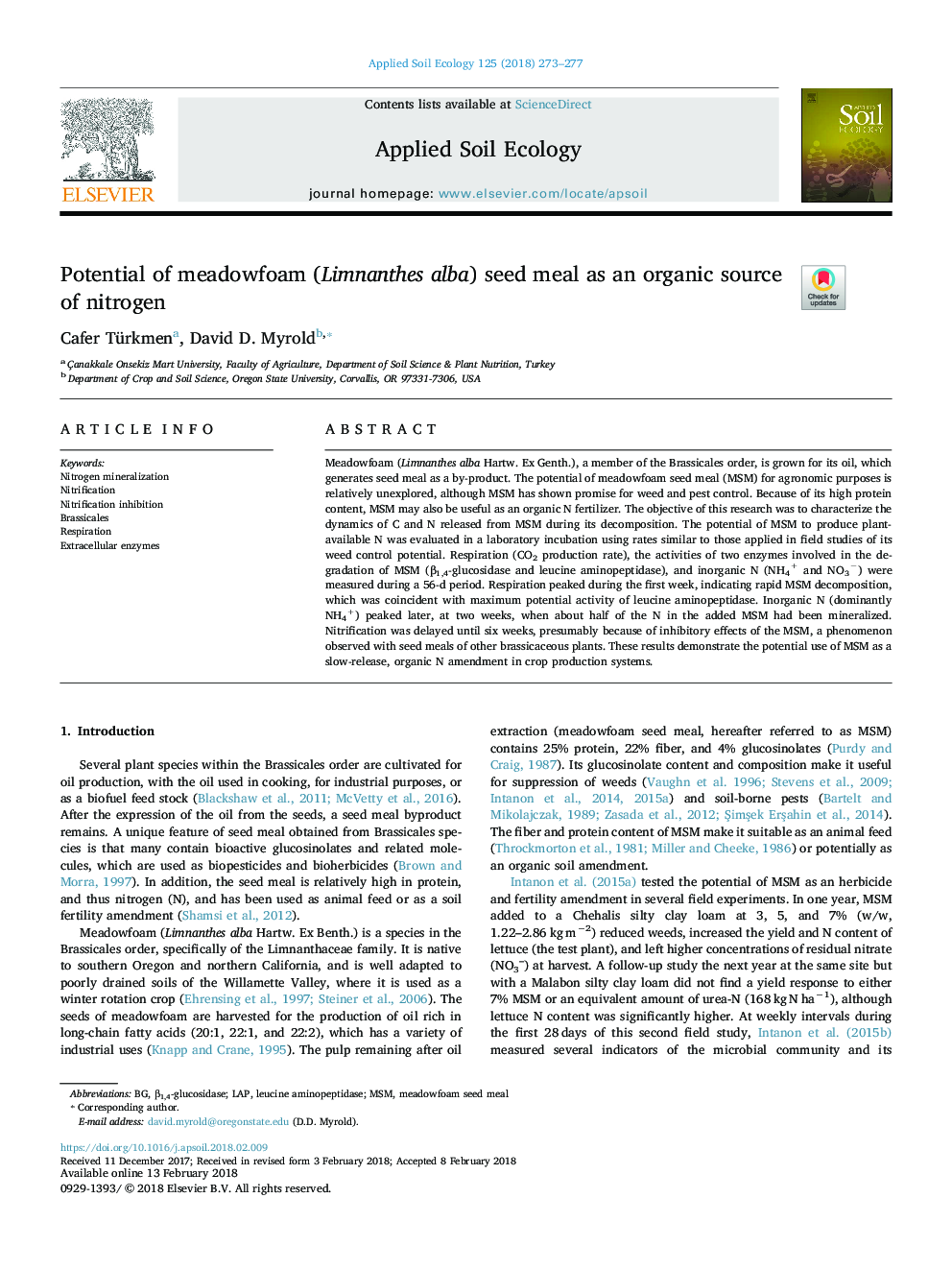| کد مقاله | کد نشریه | سال انتشار | مقاله انگلیسی | نسخه تمام متن |
|---|---|---|---|---|
| 8846737 | 1617758 | 2018 | 5 صفحه PDF | دانلود رایگان |
عنوان انگلیسی مقاله ISI
Potential of meadowfoam (Limnanthes alba) seed meal as an organic source of nitrogen
دانلود مقاله + سفارش ترجمه
دانلود مقاله ISI انگلیسی
رایگان برای ایرانیان
کلمات کلیدی
موضوعات مرتبط
علوم زیستی و بیوفناوری
علوم کشاورزی و بیولوژیک
بوم شناسی، تکامل، رفتار و سامانه شناسی
پیش نمایش صفحه اول مقاله

چکیده انگلیسی
Meadowfoam (Limnanthes alba Hartw. Ex Genth.), a member of the Brassicales order, is grown for its oil, which generates seed meal as a by-product. The potential of meadowfoam seed meal (MSM) for agronomic purposes is relatively unexplored, although MSM has shown promise for weed and pest control. Because of its high protein content, MSM may also be useful as an organic N fertilizer. The objective of this research was to characterize the dynamics of C and N released from MSM during its decomposition. The potential of MSM to produce plant-available N was evaluated in a laboratory incubation using rates similar to those applied in field studies of its weed control potential. Respiration (CO2 production rate), the activities of two enzymes involved in the degradation of MSM (β1,4-glucosidase and leucine aminopeptidase), and inorganic N (NH4+ and NO3â) were measured during a 56-d period. Respiration peaked during the first week, indicating rapid MSM decomposition, which was coincident with maximum potential activity of leucine aminopeptidase. Inorganic N (dominantly NH4+) peaked later, at two weeks, when about half of the N in the added MSM had been mineralized. Nitrification was delayed until six weeks, presumably because of inhibitory effects of the MSM, a phenomenon observed with seed meals of other brassicaceous plants. These results demonstrate the potential use of MSM as a slow-release, organic N amendment in crop production systems.
ناشر
Database: Elsevier - ScienceDirect (ساینس دایرکت)
Journal: Applied Soil Ecology - Volume 125, April 2018, Pages 273-277
Journal: Applied Soil Ecology - Volume 125, April 2018, Pages 273-277
نویسندگان
Cafer Türkmen, David D. Myrold,